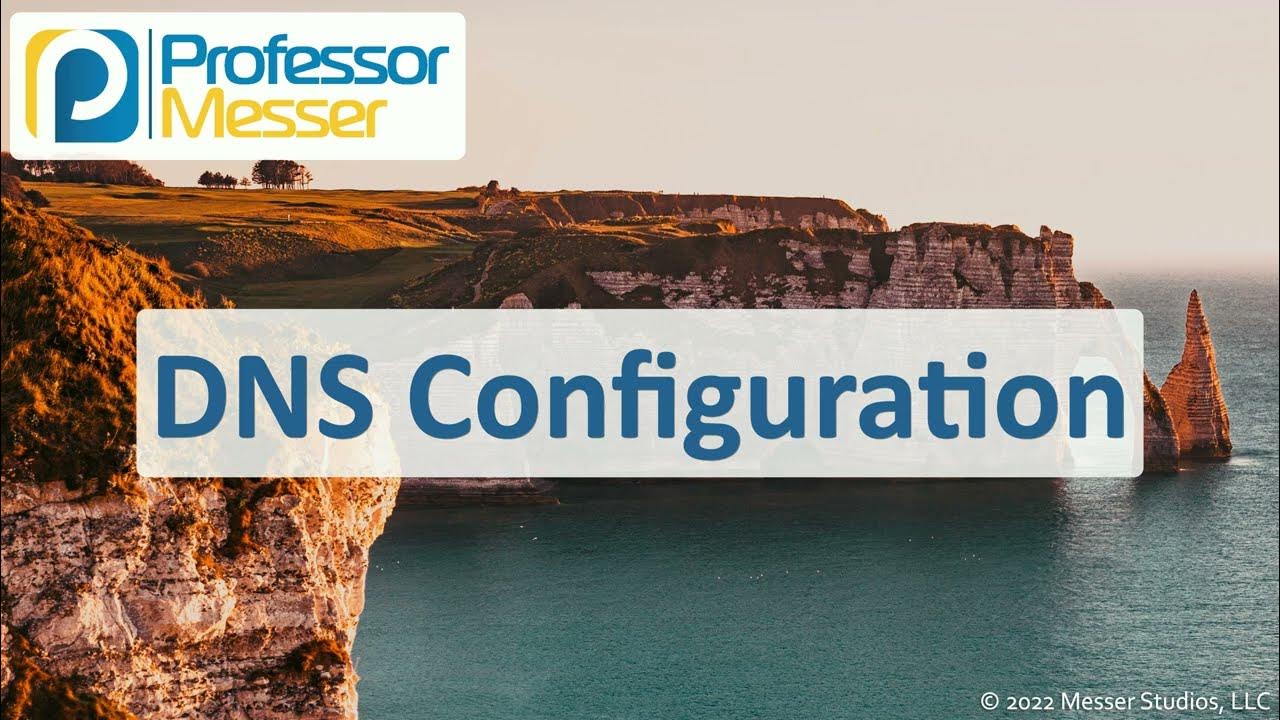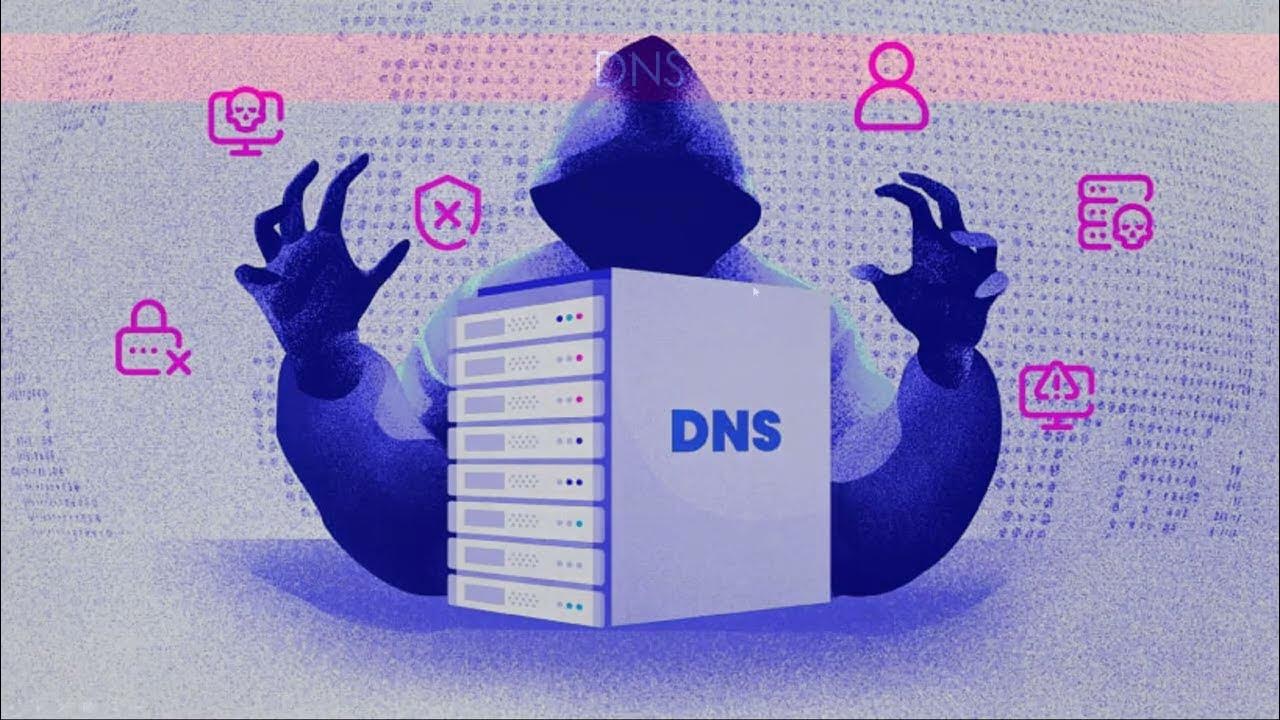4.7 DNS Enumeration
Summary
TLDRThe video script delves into DNS enumeration techniques used in network security, emphasizing the importance of understanding DNS records such as A, MX, CNAME, and PTR records. It covers tools like `dig`, `NS lookup`, and `fierce` for gathering domain information and performing zone transfers. The script highlights the vulnerability of misconfigured DNS servers, which can be exploited by attackers to retrieve sensitive data through zone transfers. The video also explains how to mitigate these risks by securing DNS configurations, making it an essential guide for network security professionals.
Takeaways
- 😀 DNS is a system used to map domain names to IP addresses, helping us discover and connect with computers on a network.
- 😀 There are various types of DNS records such as A records (IPv4), AAAA records (IPv6), MX records (email servers), CNAME records (aliases), PTR records (reverse lookups), and SOA records (zone authority).
- 😀 A DNS zone transfer (AXFR) can be exploited to retrieve the entire zone file, revealing all DNS records for a domain.
- 😀 Not all DNS servers are properly configured, which may lead to vulnerabilities like allowing unauthorized zone transfers.
- 😀 Tools like dig, nslookup, fierce, and DNS Recon are commonly used for DNS enumeration, which can assist attackers in discovering a domain's DNS structure.
- 😀 NSlookup is a Microsoft tool that allows querying specific DNS record types, including name servers, MX records, and start of authority records.
- 😀 Dig is a powerful Linux/Unix tool used to query DNS records, offering flexibility in specifying record types and DNS servers.
- 😀 Fierce is a tool that helps in performing DNS zone transfers by guessing domains and querying authoritative DNS servers.
- 😀 DNS reconnaissance using tools like DNS Recon or NSlookup can provide valuable information about a domain's infrastructure, including mail servers, DNS servers, and IP addresses.
- 😀 DNS misconfigurations, such as allowing unauthorized zone transfers, can lead to severe security risks, exposing critical internal data to potential attackers.
Q & A
What is DNS enumeration and why is it important in cybersecurity?
-DNS enumeration is the process of gathering detailed information about a domain’s DNS records, which may include IP addresses, mail servers, and other infrastructure details. It’s important in cybersecurity because it helps attackers (and defenders) understand a network’s structure, identify potential vulnerabilities, and map out systems that could be exploited.
What are some of the key types of DNS records that can be enumerated?
-Some key types of DNS records include A (IPv4 address), AAAA (IPv6 address), MX (Mail Exchange servers), CNAME (Canonical Names or aliases), PTR (Pointer Records for reverse lookups), SOA (Start of Authority), and TXT (Text records often used for anti-spam).
What is a DNS zone transfer, and how can it be exploited by attackers?
-A DNS zone transfer (AXFR) allows a full replication of DNS records from a primary DNS server. If a DNS server is misconfigured and allows unauthorized zone transfers, attackers can retrieve all records for a domain, potentially exposing sensitive information like internal subdomains, mail servers, and other critical infrastructure.
How can attackers exploit DNS zone transfers in a real-world scenario?
-Attackers can exploit DNS zone transfers by querying an authoritative DNS server using the AXFR request. If the server is misconfigured to allow zone transfers to unauthorized clients, the attacker will receive a full list of DNS records, which could include information about internal services and systems that were meant to be hidden.
What are some common DNS enumeration tools mentioned in the script?
-Common DNS enumeration tools mentioned include `dig` (a Linux/Unix command-line tool), `NSlookup` (a Microsoft tool), `fierce` (a Linux tool for DNS reconnaissance), and `DNS Recon` (a Python-based tool). These tools help users gather DNS records and perform zone transfers.
What is the difference between authoritative and non-authoritative DNS servers in the context of zone transfers?
-An authoritative DNS server holds the complete and definitive DNS records for a domain. A non-authoritative server merely caches information from authoritative servers. A zone transfer can only be successful if the queried server is authoritative for the domain in question.
How can `dig` be used for DNS enumeration and zone transfers?
-`dig` can be used to query specific DNS records (e.g., A, MX, PTR) by domain name. For zone transfers, an attacker could use `dig` with the `AXFR` option (e.g., `dig @DNS_SERVER example.com AXFR`) to attempt to retrieve the full set of DNS records from an authoritative DNS server.
What role does the `fierce` tool play in DNS enumeration?
-`fierce` is a tool used for DNS reconnaissance that helps identify authoritative DNS servers, attempt zone transfers, and perform dictionary attacks to guess which domains a server might be authoritative for. It automates much of the process of DNS enumeration.
What are potential security risks associated with improper DNS configuration?
-Improper DNS configuration can expose a network to risks such as unauthorized zone transfers, revealing sensitive DNS records, and providing attackers with information to launch further attacks (e.g., social engineering, targeted attacks on exposed servers).
How can DNS servers be secured to prevent unauthorized zone transfers?
-DNS servers can be secured by restricting zone transfers to trusted IP addresses or authorized servers. Administrators should ensure that only specific servers can query for zone transfers and implement DNSSEC (DNS Security Extensions) to further protect the integrity of DNS records.
Outlines

This section is available to paid users only. Please upgrade to access this part.
Upgrade NowMindmap

This section is available to paid users only. Please upgrade to access this part.
Upgrade NowKeywords

This section is available to paid users only. Please upgrade to access this part.
Upgrade NowHighlights

This section is available to paid users only. Please upgrade to access this part.
Upgrade NowTranscripts

This section is available to paid users only. Please upgrade to access this part.
Upgrade Now5.0 / 5 (0 votes)





